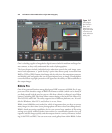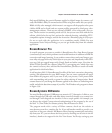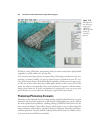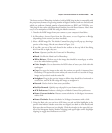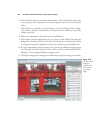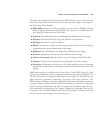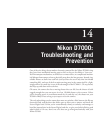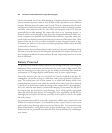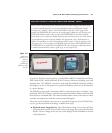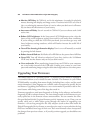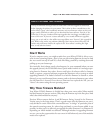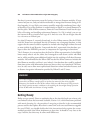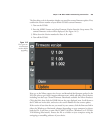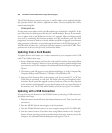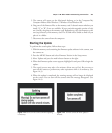
On the other hand, one of the chief drawbacks of modern electronic cameras is that
they are modern electronic cameras. Your D7000 is fully dependent on two different
batteries. Without them, the camera can’t be used. There are numerous other electrical
and electronic connections in the camera (many connected to those mechanical switches
and dials), and components like the color LCD and top-panel status LCD that can
potentially fail or suffer damage. The camera also relies on its “operating system,” or
firmware, which can be plagued by bugs that cause unexpected behavior. Luckily, elec-
tronic components are generally more reliable and trouble-free, especially when com-
pared to their mechanical counterparts from the pre-electronic film camera days. (Film
cameras of the last 10 to 20 years have had almost as many electronic features as digi-
tal cameras, but, believe it or not, there were whole generations of film cameras that had
no electronics or batteries.)
Digital cameras have problems unique to their breed, too; the most troublesome being
the need to clean the sensor of dust and grime periodically. This chapter will show you
how to diagnose problems, fix some common ills, and, importantly, learn how to avoid
them in the future.
Battery Powered
I’ve grown to live with the need for batteries even though I shot for years using all-
mechanical Nikon cameras that had no batteries (or even a built-in light meter!). The
need for electrical power is the price we pay for modern conveniences like autofocus,
autoexposure, LCD image display, backlit menus, and, of course, digital images.
One of the batteries you rely on is the EN-EL15 battery installed in the grip. It’s
rechargeable, can last for as long as 1,000 shots, and is user-replaceable if you have a
spare. The second power cell in your camera is a so-called clock battery, which is also
rechargeable, but is tucked away within the innards of the camera and can’t be replaced
by the user. The clock battery retains the settings of the camera when it’s powered down,
and, even, when the main battery is removed for charging. If you remove the EN-EL15
for long periods, the clock battery may discharge, but it will be quickly rejuvenated
when you replace the main battery. (It’s recharged by juice supplied by the EN-EL15.)
Although you can’t replace this battery yourself, you can expect it to last for the useful
life of the camera.
So, your main concern will be to provide a continuous, reliable source of power for your
D7000. As I noted in Chapter 1, you should always have a spare battery or two so you
won’t need to stop shooting when your internal battery dies. I recommend buying
Nikon-brand batteries: saving $20 or so for an after-market battery may save you a few
dollars, but can cost you much more than that if the battery malfunctions and damages
your camera.
David Busch’s Nikon D7000 Guide to Digital SLR Photography460



